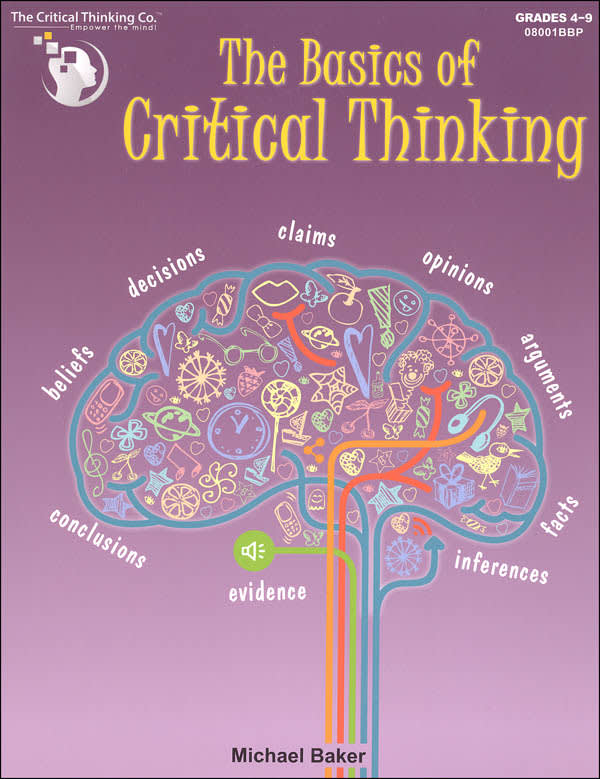While some critical thinking books for younger students focus on particular subsets of skills for critical thinking, The Basics of Critical Thinking takes a more practical and more comprehensive approach. It teaches students in grades four through nine how to find and evaluate evidence to help them arrive at accurate conclusions. In many of the lessons, students will immediately grasp the applications and the importance of sorting through possibilities.
Lessons are presented in 20 sections, but these vary in length. Some sections are brief enough for a student to complete in one or two sittings, but others will need more time. Sections all begin with brief instruction on a concept followed by an example then practice exercises. Some sections will have more than one point of instruction which is then followed with a different style of exercise. The variety keeps things interesting.
Lessons begin with an explanation of “What is Critical Thinking?” They continue with topics such as Decisions and Conclusions, Beliefs and Claims, Evaluating Evidence, Inferring and Inferences, Facts and Probable Truths, Venn Diagrams, Logical Connectives, Advertising, and Agreements and Contracts. After these sections, the last five sections deal with common errors, different types of arguments, and fallacies. The latter sections are introductory as you would expect for a book that can be used for student in the upper elementary grades. While they do not try to cover all types of arguments and fallacies, they build a foundational understanding.
Some of the exercises are similar to critical thinking items that appear on newer standardized tests. These items have a paragraph of information then students must answer questions related to the paragraph, identifying which sentence in the paragraph supports their answer.
The Basics of Critical Thinking is printed in color with frequent illustrations. The book can be reproduced for one class or family per year. A few graphic organizers toward the end of the book might be used multiple times. An answer key is at the back of the book.
While students can do some of their work independently, they should not go too far without a parent or teacher checking their answers to see if they are on track before proceeding to the next section. Sometimes students might interpret information in a way not predicted by the author, yet one that makes logical sense. Consequently, parents or teachers need to be open to alternative answers if they are logically correct. Students are often required to write answers in full sentences. Parents or teachers will need to evaluate these responses, but suggested responses are in the answer key. Most students will need to discuss exercises from time to time when they get stumped, and younger students might need to work through most exercises with someone assisting them.
I suspect that some lessons will be too easy for ninth graders and some too difficult for fourth graders—a predictable problem when one book attempts to cover such a broad span of grade levels. Nevertheless, The Basics of Critical Thinking should be a very effective tool for teaching critical thinking because it teaches so many different strategies with plenty of practical application that students will readily understand.









